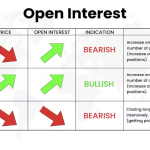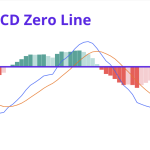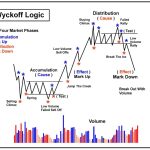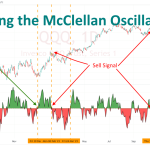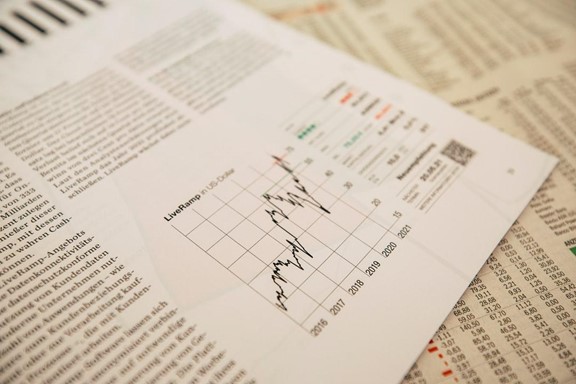
By ATGL
Updated August 27, 2024
Grasping how interest rates affect the stock market can provide a strategic edge in maximizing returns and mitigating risks. Changes in interest rates can affect corporate earnings, investor sentiment, borrowing costs, and overall market behavior. This article explores the direct and indirect effects of interest rate changes on various types of stocks and sectors, offering practical strategies for surviving market volatility.
The Relationship Between Interest Rates and the Stock Market
Interest rates and stock market performance are closely intertwined, as changes in interest rates can have a significant impact on corporate profitability and investor sentiment. Understanding the relationship between these two key economic factors is crucial for investors and policymakers alike.
How Interest Rates Impact Corporate Earnings
Interest rates significantly impact corporate earnings, primarily through their effect on borrowing costs. When interest rates rise, companies face higher expenses for financing operations and expansion. This can lead to reduced profitability and lower stock prices. However, lower interest rates decrease borrowing costs, potentially increasing profits and driving stock prices higher.
For instance, a company with substantial debt will see its interest expenses rise when rates increase, reducing net income. Conversely, lower interest rates reduce these expenses, potentially enhancing profitability.
Investor Sentiment and Market Behavior
Interest rate changes profoundly influence investor sentiment. When rates rise, the increased cost of borrowing can lead to pessimism about future economic growth, prompting a sell-off in stocks. Lower rates can boost investor confidence, leading to increased stock purchases.
Market behavior can also be affected by expectations of future rate changes. For example, if you anticipate a rate hike, you may adjust your portfolios in advance and move out of stocks and into fixed-income securities. In the same way, expectations of rate cuts can lead to increased stock market activity.
Understanding these dynamics will help you make informed investment decisions.
The Cost of Borrowing and Business Investment
Changes in interest rates directly affect your borrowing costs. Higher rates make loans more expensive, which can deter companies from taking on debt for expansion, capital expenditures, or new projects. This reduced investment can slow corporate growth and negatively impact stock prices.
Lower interest rates make borrowing more attractive, encouraging companies to invest in growth opportunities. This increased investment can boost corporate earnings and, consequently, stock prices.
Direct Effects of Interest Rate Changes on Stocks
The immediate impact of interest rate changes on stocks varies depending on the type of stock and the sector it belongs to.
Growth Stocks vs. Value Stocks
Growth stocks, typically characterized by high valuations and expectations of substantial future earnings, are more sensitive to interest rate changes. Higher rates can reduce the present value of future earnings, making growth stocks less attractive, while lower rates can enhance their appeal.
Value stocks, often trading at lower price-to-earnings ratios, may be less affected by rate changes. These stocks generally represent companies with stable earnings, making them more resilient in a rising interest rate environment.
Sector-Specific Impacts
Interest rate changes can have varying effects on different sectors. For example, interest-sensitive sectors like utilities and real estate may suffer when rates rise due to higher borrowing costs.
Financial sectors, such as banks and insurance companies, may benefit from higher rates, as they can charge more for loans. To understand how interest rates affect different market indexes and sectors, explore our comprehensive guide on stock market indexes.
Dividend-Yielding Stocks
Dividend-yielding stocks, such as those in the utilities sector, are often considered bond proxies due to their regular income payouts. When interest rates rise, these stocks can become less attractive compared to newly issued bonds with higher yields. Conversely, lower rates can make dividend stocks more appealing as you seek yield.
Indirect Effects of Interest Rate Changes
Beyond the direct impact on stocks, interest rate changes can have broader economic implications, indirectly affecting the stock market. Key factors include consumer spending, inflation, and currency exchange rates.
Higher interest rates can dampen consumer spending as borrowing costs rise, leading to reduced demand for goods and services. This slowdown can negatively impact corporate earnings and stock prices. Additionally, higher rates can strengthen the domestic currency, making exports more expensive and potentially hurting international sales.
Lower interest rates can stimulate consumer spending and investment, boosting economic growth and stock market performance. However, lower rates can also lead to inflationary pressures, which can erode purchasing power and corporate profitability. You can monitor these indirect effects using advanced tools like stock scanners.
Historical Examples of Interest Rate Impacts
Historical data provides valuable insights into the relationship between interest rates and stock market performance. For instance, during the early 1980s, the Federal Reserve raised interest rates to combat inflation, leading to a significant market downturn.
Following the 2008 financial crisis, the Federal Reserve implemented an aggressive monetary policy, cutting interest rates to near-zero levels and expanding the money supply through quantitative easing. This approach aimed to stimulate economic activity by lowering borrowing costs, impacting mortgage rates and market rates.
Lower mortgage rates made home financing more affordable, boosting the housing market. Reduced market rates shifted investor focus from bonds to stocks, contributing to a prolonged bull market. The increased money supply injected liquidity into the financial system, preventing deflation but raising concerns about future inflation.
As an investor, you can monitor economic indicators, diversify investments, and explore alternative fixed-income options to position yourself better to endure market fluctuations, capitalize on emerging opportunities, and lower risks associated with interest rate changes.
Strengthen Your Strategies During Interest Rate Changes
Navigating the stock market during periods of interest rate volatility requires strategic planning. Here are some practical tips:
- Diversify Your Portfolio: Spread investments across various sectors and asset classes to mitigate risk.
- Focus on Value Stocks: During rising rate environments, consider shifting towards value stocks, which tend to be more resilient.
- Monitor Economic Indicators: Stay informed about economic data and central bank announcements to anticipate rate changes.
- Utilize Hedging Strategies: Consider options and other hedging techniques to protect your portfolio against adverse movements.
- Invest in Financial Sectors: Financial stocks often benefit from rising rates, making them a potential addition during such periods.
For further guidance on strengthening your investment strategies, consider exploring Above The Green Line memberships for access to expert resources and tools. Armed with knowledge about interest rates, you can better anticipate market shifts and build financial resilience.


